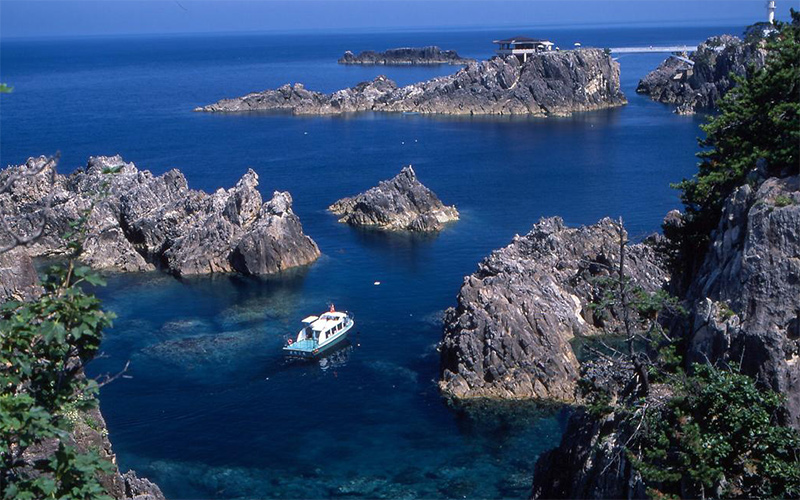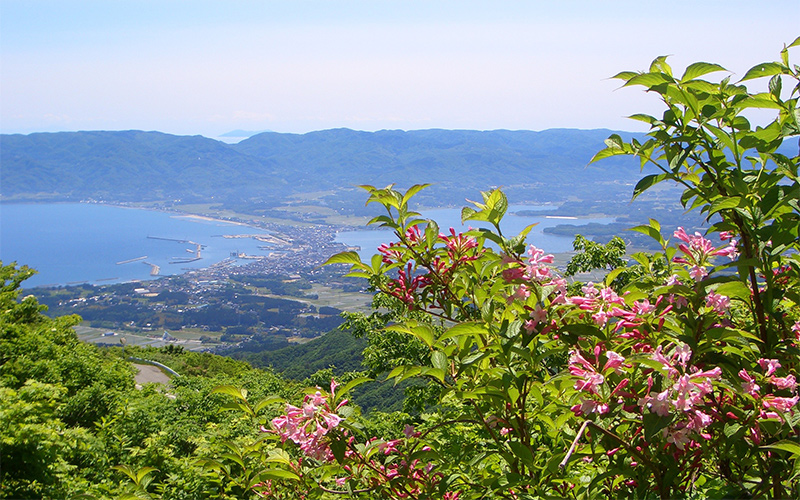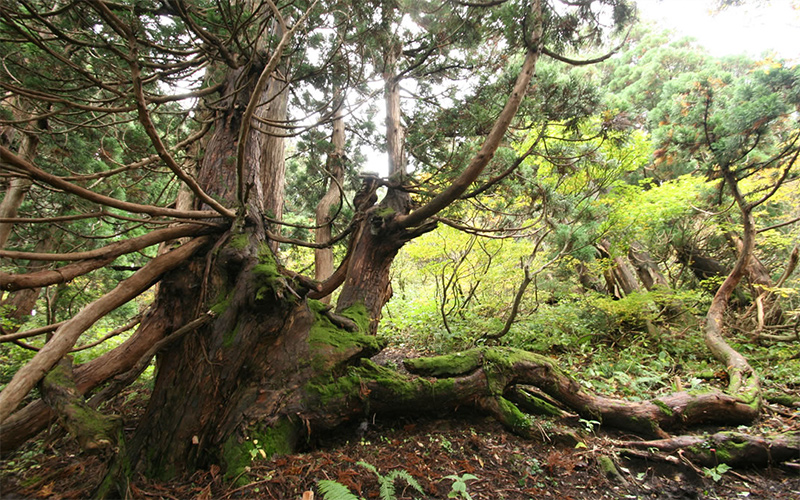- About Sado
- Nature
About Sado
Nature
Formed by tectonic processes over three million years, Sado Island developed in many ways thanks to the richly varied land. Because of the tectonic movements, Sado is studded with beautiful landscapes, namely Senkakuwan Bay and the Ogi Peninsula. In addition, Sado has every kind of coastal landform seen in Japan, and it is fair to say that the geography of Sado itself is a miniature version of Japan. Sado is like a grand theme park of the earth, showcasing its natural splendour. Thus, Sado is listed as one of Japan's Geoparks. Sado Gold and Silver Mines, toki (Japanese crested ibises), and taraibune (tub boat) are all deeply connected with the rich variety of landscapes in Sado.
The 38th parallel north, which is a boundary line to separate warm-temperate and cold-temperate floristic zones, passes through the middle of the island. On Sado, therefore, over 1,700 species of both northern and southern breeds grow naturally. Moreover, you can find gregarious wild plants, which can normally be found only at over 2,000 metres above sea level on the mainland, at below 1,000 metres, which is quintessentially a distinctive feature of Sado. Sado is said to be a microcosm of Japan, in terms of vegetation, too. In addition to wild plants and alpine plants, Sado is home to pristine primeval forests, and you can enjoy a stroll among Osado Ishina Natural Cedar Trees along a nature trail. Aiming for protection of this natural scenic beauty, a large majority of the island is designated as part of various national parks: Sado-Yahiko-Yoneyama Quasi-National Park, and Kosado Prefectural Nature Park. Sado-Yahiko-Yoneyama Quasi-National Park in particular, was the first quasi-national park, founded in July 1950, together with Biwako Quasi-National Park (Shiga Prefecture) and Yaba-Hita-Hikosan Quasi-National Park (Fukuoka Prefecture, Kumamoto Prefecture, and Oita Prefecture).
For details about wild flowers and trails, please visit the website of the Sado Trekking Council.
-

Senkakuwan Bay
-

species of both northern and southern breeds grow naturally
-

Osado Ishina Natural Cedar Forest